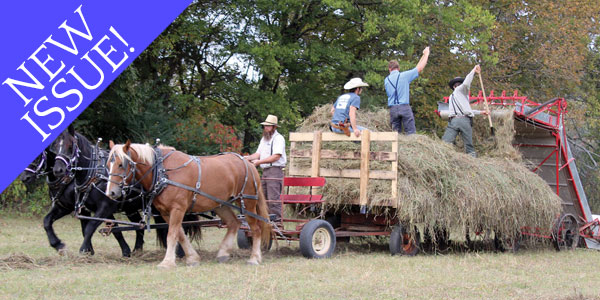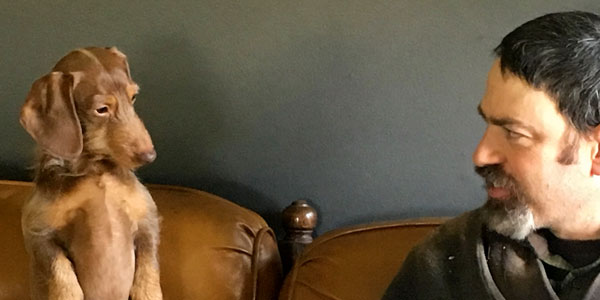
LittleField Notes: Of the Natural Order of Humans & Animals
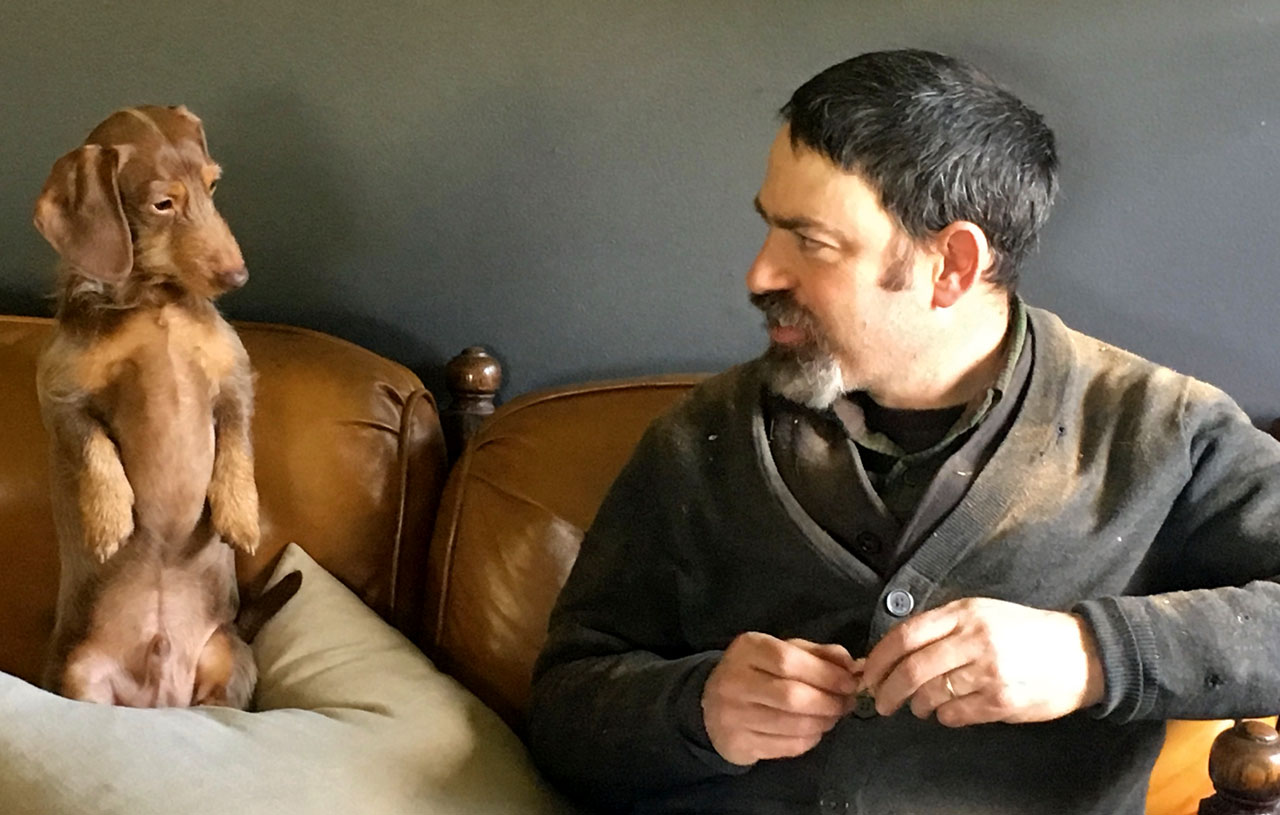
LittleField Notes
Of the Natural Order of Humans & Animals
On the Farm, as in Nature
by Ryan Foxley of Arlington, WA
Prologue
Before we began farming in earnest, and while I was still teaching school, we bought a house in a little country town on an acre and a quarter of land with a beautiful willow lined canal running through it. We put up a greenhouse and planted a big garden. Someone gave us a lamb in the spring of the year, and when he grew up and the time came to butcher him, my wife Liz said to me “You can’t kill that sweet thing.” I said “Okay,” after all he had looked up at me that morning with such innocent eyes, “but if we are not at peace eating an animal we know and have raised, how can we, in good conscience eat animals we know nothing about.” We decided that we needed to be in full accordance with all that eating meat entails, and so began our brief foray into vegetarianism.
Our vegetarian phase was short lived and we soon came to terms with our own ethical stance on eating meat. Since that time I have butchered many animals, from elk and antelope, to goats, chickens, turkeys, ducks and pigs. And though I certainly don’t think everyone who eats meat should be required to butcher their own, people should have a basic understanding of where their meat comes from and how it was raised. I have thought a lot about the issues surrounding animal agriculture in the days since I granted clemency to that lamb that looked at me with his big innocent eyes. What follows is a brief look at some of the issues as I see them surrounding animal agriculture, animal rights, and veganism.
I have vegan friends and acquaintances and I respect their commitment to an examined life for the betterment of themselves and the world. I find however, that despite their pursuit of humane and ethical ideals, there are usually gaps in their understanding of the vital role that livestock play in human scaled, diversified farming. There is enough material here to fill a book or two, as such, this will be but a brief foray into the murky waters of agricultural ethics as seen through the eyes of one small farmer. To our animal rights oriented friends who are involved in small farming (and there are many), I offer these thoughts not as a gauntlet thrown down in defiance, but rather in the spirit of the intellectual and philosophical pursuit of a responsible and sustainable human existence on this planet.
Some Questions
What is the value of a life, whether human or animal?
Is it better to live well and short, than to have not lived at all?
What value, if any, can be ascribed to a farm animal beyond the surface value of a dozen eggs, a gallon of milk or a pound of hamburger? Manure, companionship, tractive power, aesthetic beauty, cultural and mythic values?
How will genetically viable populations of farm animals continue to exist if humans cease to utilize them for food and fiber?
We know that in nature the extinction of one species in an ecosystem will inevitably affect all other species in that system. Does the same hold true for the ecology of the farm?
Considering issues of nutrient recycling, organic maintenance of soil fertility, and the utilization of marginal and steep farm land, what are the long-term prospects for the global food supply and soil health if livestock are eliminated from agriculture?
What is at the heart of the notion that humans should avoid killing animals? Is it a fundamental fear of death itself? Anthropomorphism gone too far? A belief that cleverness and high-minded thinking can allow people to exist outside the natural food web so integral to the rest of the natural world?

Predator and Prey
Scene 1
The thundering of 10,000 hooves beats like thunder across a vast landscape; a great dust cloud rises behind as warriors on painted ponies ride like the wind, wielding spears and bows and arrows. Horse and rider pace the speeding animals with devilish skill; at close quarters an arrow is loosed and with a twang finds its mark. The bison stumbles, slows and finally tumbles to the ground. He tries to rise, but is quickly repressed with another arrow. Thwack!
A young mother sits quietly in front of a small fire nursing an infant. While the baby suckles, she herself slowly eats pieces of dried bison meat, from which she receives the nourishment which enables her in turn to nourish her child.
The bison breathed his last that the young mother’s child might breathe his first.
Scene 2
All that can be heard is the roar of the falls. A man stands, balanced precariously over the rushing waters, long-poled net in hand. A great silver fish is brought skillfully up to the platform on which he stands. The salmon are coming in thick now, working their tails hard and using every fiber of their strength to ascend this watery path back to their ancestral spawning grounds, where they will lay eggs in a gravelly shallow, expending the last of their bountiful energy until finally, in an act of complete self sacrifice, the fish will die, their bodies stacking up on the banks or floating back downstream, nourishing in turn the eagles, coyotes, crows and many others. The man takes his fish back to the village. Dried salmon from this run will feed his young family through the coming winter.
The fish casts off its life that human, eagle, coyote and crow might continue with their own.
Scene 3
I am up before dawn. There is a dusting of new snow on this crisp November morning, though I am not cold as I stand in front of the scalding fire. Today we will butcher hogs fattened on surplus vegetables from the farm. Friends from up the valley have come to lend a hand. We are farmer-butchers, not professionals and it will take us most of the day to accomplish our task. We work hard and steady, in that spirit of fellowship and good cheer that arises naturally from such work. Darkness has fallen by the time we at last finish and sit down to fresh thinly sliced Korean style barbecued pork with vegetables, while the rendering fire yet smolders. After dinner Liz sits next to the wood stove nursing baby Brendan, now nourished by the pig who was nourished by surplus root crops from our small vegetable fields.
These pigs died that my family might live.
And so it goes; and so it has always gone; and as long as there is life on this earth, so it will continue: the great circle of life and death, that great biological engine which at once destroys and creates. We are all of us recycled goods. The stuff of our cells is made up of the stuff of the cells of countless other lives lived before, some short, some long, some vegetal, some animal, some fungal, some microbial, each profiting at the expense of another. Debits and credits are so enmeshed as to render impossible a true accounting.
Relationships between prey and predator are alive and well in the natural world. Wolves re-introduced into Yellowstone National Park once again pray on elk, which, in a startling display of the inextricable connectedness of all life, has improved water quality of Yellowstone rivers. In April I watch migrating gray whales eat krill from the shallows off Camano Island. Hawks and owls eat field mice from my pastures; the swallows who inhabit my barn eat tens of thousands of insects over the course of a summer evening. Anthropological records show evidence of hunting by humans and our direct ancestors as far back as 2 million years.
Yet there is a growing cry for humanity to forgo entirely the eating of animals, an idea that would have been unthinkable in centuries past. After all, before we became farmers raising livestock, we were hunters and gatherers, not simply gatherers. Veganism-for-all is an idea that is possible only in a world of hyper-abundance, supported by mass transport, commercial fertilizers and industrialisation of the food supply. Which is itself ironic, considering it is the industrial food model itself that spurned the animal rights ideology in the first place.
The modern day impetus for the rejection of eating animals is completely understandable. One does not need to dig too deep to find disturbing videos and accounts of slaughterhouse horrors, the hideous reality of concentrated animal feeding operations (CAFOs): hens and sows in tiny cages; hundreds of thousands of cows fed unnatural amounts of antibiotic laden grain in vast polluting feedlots; so-called dairies with 10,000 cows producing obscene amounts of milk from scientifically formulated total mixed rations (TMRs). It’s enough to give any thinking individual pause when considering their next meal.
If this were the beginning and end of the story, there would be nothing more for me to say.
Yet this is not the whole story, indeed far from it. Many well-meaning, conscientious people have thrown the proverbial baby out with the bathwater. They have seen the evidence and have decided: industrial agribusiness sets the standard and all ideology will flow from there, seemingly without consideration of natural history, biology, or sound agricultural practice.
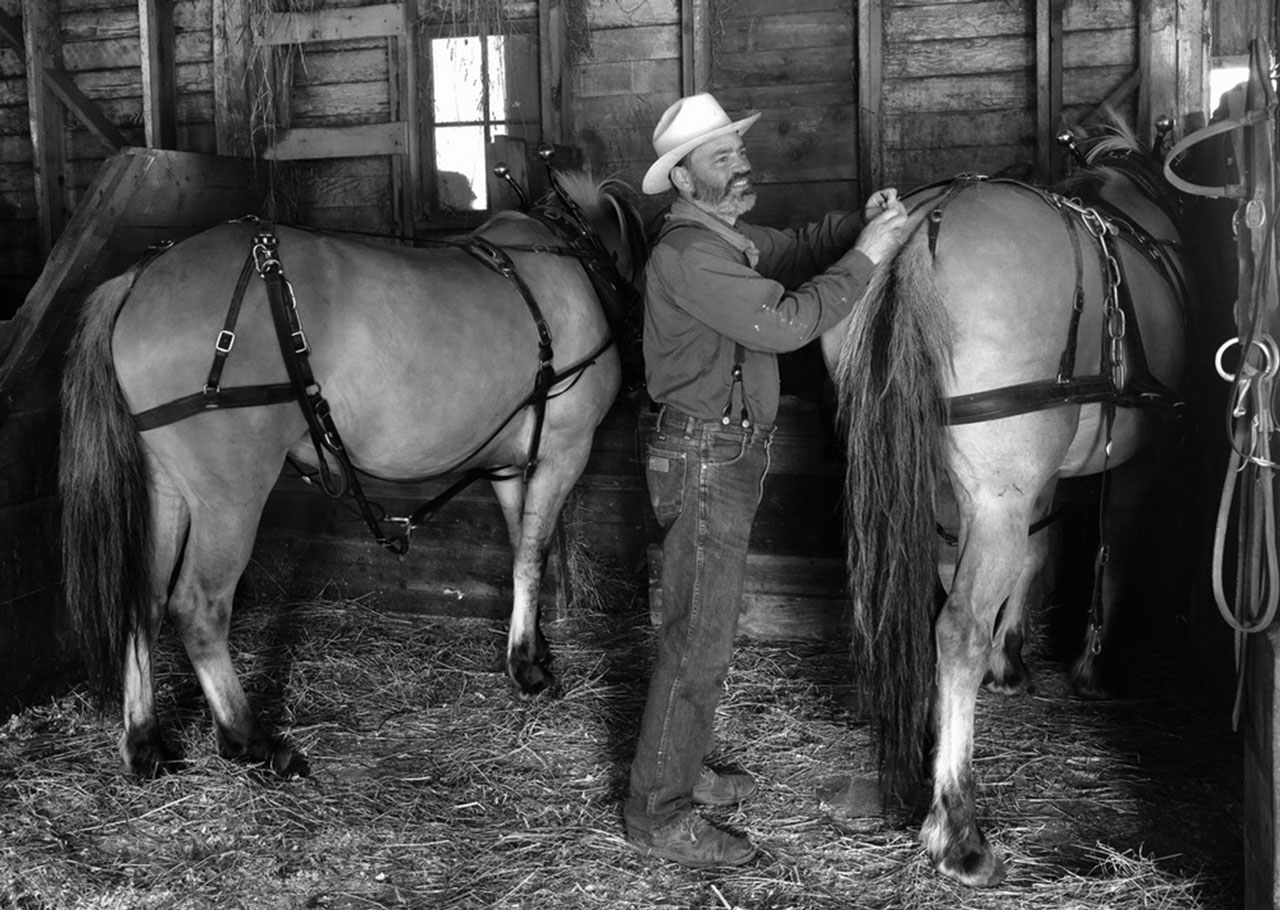
Humans are not Separate from Nature
As in Newton’s third law, where a given action creates an equal and opposite reaction, so too, it seems with ideology. While it is understandable that the reaction against factory farming would be to advocate for the cessation of the killing of all animals, it runs counter to the biological imperative which drives life on earth. In essence, why, after 2 million years of killing and eating animals, just like other predators, has it become immoral to do so now. When did people rise above nature?
For many centuries and indeed up to the present day, there have been certain religious groups who have, for various ascetic and spiritual reasons given up the eating of meat. Yet human societies in general throughout history have had no choice but to eat the food available to them in their local environment, and that invariably meant not only roots and berries, but animals too. Before agriculture this meant hunting and fishing in the woods, prairies, rivers and oceans where people lived, thereby profiting by what the land and waters could provide. Once humanity adopted agriculture and hunting was no longer necessary, domesticated livestock, adapted and selected for local conditions, replaced wild animals in the diet. Killing animals was done not for pleasure or profit, but out of necessity. If one did not kill, one did not eat. Human beings are integral to the earth, to our ecosystems; we live, we die, we kill and even we ourselves are sometimes killed.
It is only in this time of vast abundance, powered by the corporatized industrialization of the food chain that we are at leisure to suggest that we forgo the eating of animals entirely.
If you doubt what I’m saying, take a look at the vegan and vegetarian options found in any supermarket. Aside from rice and beans and fruits and vegetables, there exists a plethora of highly processed, scientifically engineered, factory made products. These are based mostly on soy grown in a monoculture, sewn and harvested with mega machines and shipped around the world utilizing the industrial transportation complex. This kind of eating is not natural, nor is it sustainable, nor is it a higher moral choice than eating responsibly raised animals from one’s locality.
There is a certain hubris surrounding the opposition to the killing of animals for food, a certain attitude of human superiority, an implicit idea that we are above nature, not of it.
Ironically, this hubris echoes the very attitude that created industrial farming to begin with. That is to say, a denial of the fundamental truth that, though humans are highly evolved, we are still creatures of this earth, bound up with, and subject to its laws. It leads me to ask a basic question: why is it perfectly acceptable for predators in the so-called “natural” world to kill other animals for food, but a moral failing for humans, despite our having done so for eons?
Extinction
Consider farm animals for a moment from an existential point of view. If there is no longer a reason for their existence, will they continue to exist? That is, if we stopped eating cows, pigs and chickens and stopped using horses to pull farm implements and carriages, these animals would, by logical extension cease to exist. That these animals exist in the first place is due only to the fact that they were bred to fulfill very specific rolls in the complex human/animal web developed over the 10,000 years since domestication. If the purpose of keeping farm animals is for meat, milk, or egg production, and if we discontinue eating meat, milk and eggs, these animals will cease to exist in any kind of meaningful number.
Some may retort that I am being overly dramatic by using the word extinction, that I am being hyperlogical, and that the argument of extinction is just hypothetical and should stay within the realm of conjecture and intellectual exercise. Yet thousands of breeds that used to populate small farms in all corners of the world have already vanished into oblivion along with the farms and farmers that once raised them. The notion that countless species of wild animals and plants have tragically gone extinct, or are in perilous danger, is well known and understood among the general population — think of passenger pigeons, polar bears and African rhinos. Rare and important livestock breeds face the same threat, yet most people have little or no awareness of the issue, and even less why it might be important. The loss of rare and treasured livestock breeds is an issue no less grave than that of the extinction of wild animals. Consider the Campbell Island, Alderney, and Fribougoise cattle breeds — all extinct. It is estimated that 1/3 of all livestock breeds on the planet are currently in danger of extinction. Mass adoption of the vegan diet would only hasten this doom. It is a tragic irony that those most opposed to the death of farm animals at the hands of farmers, tacitly encourage the extinction of all farm animals.
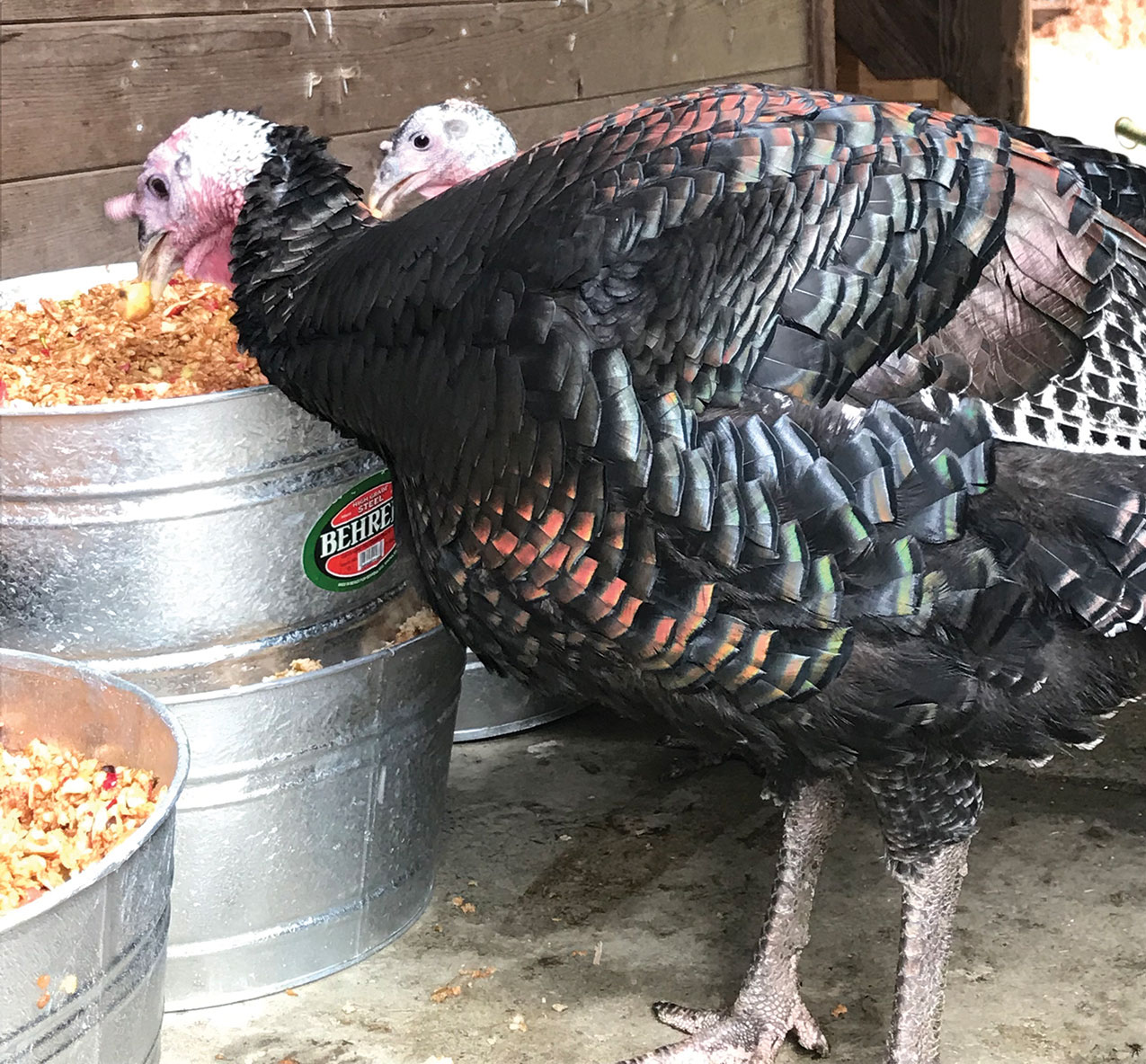
Suffering
There is a distinctly modern ideology which proffers the possibility of living without suffering. That whether human or animal, one has a right to be at all times free of suffering. The truth is though, that the only thing in life as certain as death is suffering. These facts need not be macabre, morose, or inhumane, but should not be denied. Suffering and death are inescapable aspects of life, whether human or animal. We are born, we live, from time to time along the way we suffer, and at the end, we die. Of course it is only natural that we would want to avoid suffering, and we should absolutely avoid causing unnecessary suffering to others—human or animal. Yet modern science and the invention of anesthetics and air conditioning have changed our perception, giving the false illusion that it is possible to avoid all suffering. Yet it still exists and always will.
There is a good chance that I myself might someday suffer in the confines of a sterile, inhospitable hospital at the end of my days, as the doctors try to prolong my life at all costs. Lying there in misery hooked up to machines and tubes, my thoughts will undoubtedly drift back to a scene on a crisp autumn morning down on the old farm on the Stillaguamish:
A two-year-old Dexter Steer stands in the barnyard working his cud in perfect contentment on a cool November morning. Like me, he has come to the end of the line. A single shot rings out; the lights for him go out and he does not wake.
Would that I could be so lucky.
“Natural” Death
And what of the notion of death and the idea that every animal should be allowed to live out its so called “natural life,” to die of “natural” causes? I suspect that at its core, a large part of this philosophy stems from our own uneasy relationship with death. Modern humans especially, fear death. We live with a full uneasy awareness that death eventually comes for each of us. We cling desperately to life, as if by holding tight we can exert some measure of control. Because we fear death, and because we tend to anthropomorphize the behaviors of animals, it is easy to fall into the trap of assuming that our existence, our awareness, and our fear of death is present in equal measure in animals. It is true that all animals react according to evolutionary principles which favor the conditions which will afford them the best chance of survival, that is, of avoiding death. Animals feel pain and know fear. This helps keep them safe from predators and danger. However, they do not have a foreknowledge of their own death as do humans. Rather, they live like zen masters, fully alive in the eternal present moment, not dwelling on regrets of the past or fears of the future.
What then, signifies a “natural death?” To animal rights advocates, “natural” death seems only to mean death by old age and disease, not death at the hands of a predator, especially if that predator be human. People have the very distinct privilege of existing at the top of the food chain and we, like other top predators have a better chance than most of living to old age and “natural” death. Yet, the very idea that the only natural death is one that comes of old age is problematic. When the orca eats a chinook salmon in the prime of its life, is the salmon’s death unnatural? Should orcas be exterminated so that all salmon can live out their full life and die after spawning? And what about the cheetah that brings down a wildebeest long before it’s so-called “natural” lifespan would have run its course? No one is advocating for cheetahs to stop eating wildebeests. It follows then, that a farmer should be able to raise a few cattle and butcher them for meat before they die of old age. It’s really not so different from the orca and salmon, cheetah and wildebeest.
Bringing it Home
An alder tree in the lower field by the river died; a big wind from an early autumn storm blew it down where it lay in a skunk cabbage bog. Boring insects had already moved in while the old tree yet stood, and now they were joined by various fungi, molds, and slugs, in a concerted effort to return the tree to the soil from whence it came. A woodpecker flicked about and bored furiously into the tree, eating her fill of grubs and bugs. Satisfied for the moment, she flew off over the pasture, but caught unawares, was pummeled by a diving sparrowhawk. The woodpecker, having just finished her breakfast, quickly became the breakfast of another.
The web of life surrounding this alder looks even more complex if we look back 100 years. Alders are a pioneer species and grow in disturbed areas, like in the margins of cleared fields. This tree would have sprouted up at the edge of the little field when George Hjort was carving out a farm for himself in these woods by the river in the early 20th century. For 100 years its leaves have fallen and decomposed on the surrounding grasses, and its roots, by fixing atmospheric nitrogen in the soil have further increased the fertility of this place. My cows love to take shade in the old alder grove in the far corner of the farm. Sheltered by the trees and eating the grasses in the meadow they in turn nourish my family and others with meat and milk. Their manure collected in the winter will, in turn nourish the vegetable garden, even further complicating, and implicating in a delightful way, the web of life that is this small farm. And if you saw my small herd lying in the shade of these trees at the edge of the pasture, you would have to do some fancy talking to convince me that keeping cattle under these conditions was somehow cruel, immoral, or at odds with how human beings should live on this planet. This secret corner of the farm is a delightful mingling of wildlands and cultivated, where there is no fixed boundary, where my livelihood is inextricably bound up with that of the nature of the place.
For the sake of argument, let’s say instead, I decided to follow the advice of those who advocate for the elimination of the eating of animals. What would this part of the farm look like under this scenario? I would likely start by plowing up this little patch of pasture and planting soybeans. Fence rows and shade trees, and the inherent wildlife and flora that they harbor, would be rendered useless and inconvenient, and would have to be removed. This field, which likely has never been plowed, would fall under a new regime of annual tillage, burning carbon, instead of fixing it, degrading soil instead of building it. Situated between a steep slope and a river, and being in an area of high rainfall, there would certainly be erosion, further harming the river and its already dwindling salmon population. Lacking homegrown manure from the cows, I would need to purchase fertilizers from off the farm. Expensive modern harvesting machinery would be needed, and for this I would expand equipment access by cutting down more trees and widening the path to the field. Once the crop was harvested I would have to ship it by truck off to a factory where it would be turned into meat substitutes like tofurkey. Then in turn it would be packaged in plastic and shipped to stores by more trucks and trains for the so-called “conscious” consumer to enjoy with a clean conscience.
While there are plenty of good places and techniques on earth for growing row crops, there remains vast tracts of land that are simply not suitable for the plowing and planting of commodity crops like soybeans. For many reasons these lands are best left in permanent pasture or woods. Humans cannot eat the grass that grows in pastures, but we can, from a sort of beautiful natural alchemy, eat the animals that can eat it.
Mixed farming, including crops and livestock, woodlands and pasturelands, is a beautiful, natural, regenerative, restorative, and completely appropriate, if not the only appropriate form of agriculture. The best farming mimics nature. Though at present the human species is choosing to ignore it, we are beholden to natural law, which requires diversity, and features at once growth and decay, animals and plants, life and death.
Let’s say that despite my bucolic description of my cows and their field, you are still not convinced. You are going to tell me that the world eats too much meat, and that a plant-based diet is more environmentally friendly, that I should just reread Diet for a Small Planet and go eat my lentils. The numbers are there, you say, the science is there: it’s better to feed grains to people directly rather than feed them to livestock and then to people. I will agree that Americans especially, do eat too much meat, that meat is too cheap, and that on an industrial scale, it is highly problematic for the planet and for the health of our land, and that feeding vast amounts of grain to livestock in confinement is a disaster on many levels. This is the engine that drives the fast food industry and the modern western diet in general. It is energy intensive, destructive to land and waters, inhumane, hard on animal and human health, and is ultimately doomed to failure.
But industrial farming is not farming, agribusiness is not agriculture. CAFOs are not barnyards, feedlots are not pastures. More monoculture soybeans are not the answer; more engineered fake meat is not the answer.
What then, is the answer?
More pastures, more woods, more sheep and cows on meadows, more gardens, more steaming compost piles, more hogs eating spent grain and surplus vegetables, more fence rows full of sparrows and bumblebees, more locally adapted heritage breeds, more orchards and berry patches, more farmers markets, more seed saving, more draft horses and mules, more barefoot children running through summer fields, and finally — more people, please more people farming. The way to a better future will be built around more people living on the land and practicing the inseparable arts of animal husbandry and land stewardship.

Epilogue
These issues have been particularly present in my mind the last couple of months. Because of the pandemic my son Rowan brought a college friend to stay with us through the summer since she could not travel to Chicago for a planned internship, nor could she return to her native Moldova. When Sandrina arrived she was an avowed vegan. We spent many hours discussing animal welfare and animal agriculture, her problems with it, and my rebuttals. One afternoon I pointed out to the field and said to her, “Look there at our milk cow Lilac, the jet black one with the beautiful sweeping horns. See how content she lies with her calf at her side, in grass taller than she, enjoying the sun on her back. That is simply not a picture of animal cruelty, would you agree?” She couldn’t disagree. It really was a beautiful, bucolic scene. When she saw with her own eyes that our livestock lived such good lives, and that all animal agriculture is not about feedlots and confinement, her vegan standards began to slip, right up until the day before she and Rowan were to head back to Santa Fe and St. John’s College. That morning I got a text message from Liz, who was out and about. It read: “Would you please get some steak out to thaw? The vegan has requested that.” Sandrina had said that the bite of Dexter rib-eye she had tried earlier in the summer was the best bite of meat she had ever tasted in all her life, and she wanted to taste it once more before returning to college and her vegan diet. I smiled warmly and chuckled all the way to the freezer.




